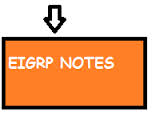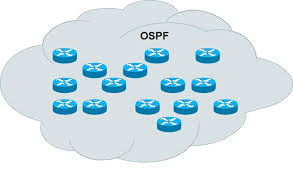1. Does EIGRP support secondary addresses?
Answer: EIGRP does support secondary address. Since EIGRP sources data packets from the primary addresses, Cisco recommends that we configure all routers on a particular subnet with primary addresses that belong to the similar subnet. Routers don’t form EIGRP neighbors over secondary network. For which, if all of the primary IP addresses of routers don’t agree, problems arises with neighbor adjacency.
2. What does the EIGRP stuck in active message mean?
Answer: When EIGRP returns a stuck in active message, this means that it has not received a reply from a query. It sends a query when a route is lost and another feasible route does not exist inside the topology table. The SIA is caused by 2 sequential events:
- The reported route by the SIA has gone away.
- An EIGRP neighbor (or neighbors) have not replied to the query for that route.
When the SIA occurs, the router clears the neighbor that did not reply for the query. When it happens, determine which neighbor has been cleared. We should Keep in mind that this router can be many hops away.
3. What does the neighbor statement in the EIGRP configuration section do?
Answer: The neighbor command is used in EIGRP in order to define a neighboring router with which to exchange information of routing. Because of the current behavior of the command, EIGRP exchanges information of routing with the neighbors in the form of unicast packets whenever the neighbor command is configured for interface. EIGRP holds on processing all multicast packets that come inbound on that interface. EIGRP also mutes sending multicast packets on that interface.
The ideal behavior of this command is for EIGRP to start sending EIGRP packets as unicast packets to the specified neighbor, but don’t stop sending and receiving multicast packets on that interface. As the command does not behave as intended, the neighbor command must used carefully.
4. Why does the EIGRP passive-interface command remove all neighbors for an interface?
Answer: The passive interface command disables the transmission and receipt of EIGRP hello packets on interface. Not similarly IGRP or RIP, EIGRP sends hello packets in order to form and sustain neighbor adjacency. Not having a neighbor adjacency, EIGRP doesn’t exchange routes with a neighbor. For which the passive interface command prevents the exchange of routes on the interface. Although EIGRP does not receive or send routing updates on an interface configured with the passive interface command, it includes the address of the interface in routing updates sent out of other non-passive interfaces.
5. What is the difference in metric calculation between EIGRP and IGRP?
Answer: The EIGRP metric is obtained when you multiply the IGRP metric of 256. The IGRP uses only 24 bits in its update packet for the metric field, but 32 bit is used by EIGRP in its update packet for the metric field. E.g the IGRP metric to a destination network is 8586, but the EIGRP metric will be 8586 x 256 = 2,198,016. Integer division is used when we divide 10^7 by lowest BW, so the calculation involves division of integer, which may leads to a variation from manual calculation.
6. How does EIGRP behave over a GRE tunnel compared to a directly connected network?
Answer: EIGRP will use the same administrative distance and metric calculation to the GRE tunnel. The calculation of cost is based on delay and bandwidth. The bandwidth and delay of the GRE tunnel must be taken from the tunnel interface configured on the router. The tunnel will be treated like a directly connected network.
If there are 2 paths to reach a n/w either through a tunnel interface or VLAN interface, EIGRP prefers the Virtual-Access Interface VLAN interface because the VLAN interface has greater bandwidth than the tunnel interface. To influence the routing through the tunnel interface, It increases the bandwidth parameter of the tunnel interface, or increases the delay parameter of the VLAN interface.
7. Can an OSPF default be originated into the system based on external information on a router that does not itself have a default?
Answer: OSPF generates a default only if it is configured using the command default-information originate and if there is a default network in the box from a different process. In OSPF the default route is 0.0.0.0. If we want an OSPF enabled router to generate a default route even if it does not have a default route, use the command default-information originate always.
8. How does Cisco accommodate OSPF routing on partial-mesh Frame Relay networks?
Answer: We can configure OSPF to understand whether it should attempt to use multicast facilities on a multi-access interface. If multicast is available, OSPF usually uses it for its normal multicasts
Cisco IOS Software Release 10.0 includes a feature called sub-interfaces. We can use sub interfaces with Frame Relay to tie together a set of virtual circuits to form a virtual interface, it acts as a single IP subnet. All systems inside the sub-net should be fully meshed.
9. Which address-wild-mask pair should I use for assigning an unnumbered interface to an area?
Answer: When we configured an unnumbered interface, it references an another interface on the router. When we enable OSPF on the unnumbered interface, we should use the address-wild-mask pair of interfaces to which the unnumbered interface is pointing.
10. What is the link-state re-transmit interval, and what is the command to set it?
Answer: OSPF sends acknowledgment of every newly received link-state advertisement. It does this by sending LSA packets. After that LSAs are re-transmitted until they are acknowledged. The link state when re-transmit the interval it defines the time between the re-transmissions. We can use the command IP OSPF re-transmit interval to set the re-transmit interval. 5 seconds is the default value.







